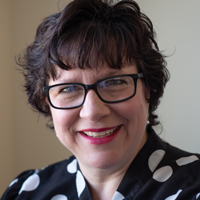
Dan and Linda VanBuren were successful Seattle-based entrepreneurs who ran a machine shop making aircraft parts. They sold the business this year and have saved enough money to retire by the age of 60. They have successfully launched three children and are ready to start the next chapter of their lives. Dan enjoys sailing and biking and Linda enjoys running marathons and she is an adjunct professor of Mechanical Engineering at the University of Washington.
Dan and Linda maximized their contributions in their company’s 401(k) plan and they have $4 million in pretax funds and $600,000 from the sale of the business. They planned to take Social Security at age 67 and they have enough after tax funds to bridge the gap.
As their financial advisor, what is their best course of action? That depends.
I have heard many advisors say that the order of asset distribution should be from after-tax assets first, then pretax-assets, then tax-free assets. That isn’t always the best strategy. Assuming that a client’s income is relatively low, you might consider one of these two strategies.
A Roth Conversion Strategy
The first strategy would be to convert money from the pretax funds, in this case their 401ks, into a Roth IRA. Conversion strategies work best under the following conditions:
• The clients are younger, rather than older; therefore, their converted Roth IRA assets have more time to grow.
• The clients have a heavy amount of pretax assets and also have enough after tax assets to pay for the taxation of the conversion.
• The clients are not averse to investing their portfolio in the market. (A very conservative portfolio will not grow as fast as a more aggressive portfolio.)
Lowering tax-sheltered account balances can help to decrease future required minimum distributions (RMDs) at age 72 and reduce future taxes. Some planning software can help an advisor test multiple conversion amounts over various years to determine how good markets vs. bad markets can impact the potential tax savings. This can be a great way to optimize their overall plan.
Another benefit to Roth conversions is the impact that inheritance can have on non-spousal beneficiaries. The SECURE Act changed the way that non-spousal beneficiaries inherit tax-sheltered assets. Prior to January 1, 2020, those tax-sheltered assets could be rolled into an IRA and any distributions “spread” over a person’s lifetime, resulting in smaller RMDs. Since the SECURE Act went into effect on January 1, 2020, non-spousal beneficiaries must distribute all inherited tax-sheltered assets within the 10 years following the original account owner’s death.
Non-spousal heirs may withdraw all the funds in year one, distribute the funds over many or all of the ten years, or wait until the 10th year to distribute the full amount. Many who inherit these assets would prefer Roth IRA assets because distributions are tax-free.
The VanBuren’s were concerned that with the amount of assets in their 401(k) accounts, they would be placing a burden on their three children, who were all flourishing in their own careers, if they were to inherit Dan and Linda’s assets during their own peak-earning years. Dan in particular felt that tax rates were more likely to go up than down, and that enabling their children to pay taxes now, during the children’s low-earning years, was a good investment in the future. The VanBurens decided to roll their 401(k) assets into a rollover IRA in order to make Roth IRA conversions easier.
TIP: During your client’s saving years, encourage investors to save not only in pretax and Roth IRA accounts but also in after- tax accounts so that they have more flexibility upon retirement.
Minimizing Future RMDs
If a Roth IRA strategy is not appealing to your clients, another option is to start taking distributions from their IRA accounts up to what you might consider an acceptable tax threshold. That tax threshold may be different depending on your client’s situation. Someone who has a very large amount in pretax assets may be fine taking income up to the 22% or 24% marginal bracket, whereas others with fewer assets may only want to take funds up to the 12% tax bracket. Using a software program that can compute potential gains and future values of pretax accounts can be very helpful in projecting how to minimize tax rates over time.
TIP: Make sure you understand your client’s healthcare needs. If additional income will disqualify them from access to lower cost health insurance, you may want to rethink their plan. The difference between the cost of these plans can be prohibitive and may be one of your client’s primary concerns.
Although the VanBuren’s decided to do some Roth conversions the first several years of retirement, they also chose to pull some income from their rollover IRAs prior to age 72 to help reduce future minimum required distributions. Linda also wanted to support some of her favorite charities, so she decided to do qualified charitable distributions from her IRA, which reduced the tax on her required minimum distributions.
Qualified charitable distributions are an-above-the line deduction for income tax purposes, making them a powerful tax saving strategy for clients who believe in charitable giving. They are also very easy to set up at most investment firms.
Questions to Help determine Your Clients’ Preferences
Clients’ unique situations and their preferences regarding taxes should also be a factor in determining which strategies to use. Here are a number of questions advisors can ask clients to help determine the best income-stabilization strategies to employ.
- How would you feel about paying some taxes now to avoid paying taxes in the future?
- Do you believe that future tax rates will increase, decrease or stay the same?
- How long do you believe that you might live? What is the longevity in your family? How healthy do you believe you are?
- Are you more inclined to spend as much as you can afford to in your lifetime, or would you like to leave a legacy to your heirs?
- What are the tax rates of your heirs?
- What does your charitable giving look like and do you anticipate that will change over time?
- What is your attitude about taking money from your pretax accounts versus your after-tax accounts? Why?
Summary
Every client’s needs are different. Some clients prefer to front load their retirement with additional spending, such as heavy travel the first few years when they are young and feel they can enjoy it. Some wait to collect Social Security until later to get a higher monthly benefit. Some see the advantages of paying taxes now to avoid them later. Others would scoff at paying a tax bill now in lieu of some of the additional benefits later.
The point is, there no one size fits all solution. Each person has unique needs, and their retirement plan and goals should reflect those needs and the values that they hold dear.
Monica Dwyer is a Certified Financial Planner® Practitioner and Certified Divorce Financial Analyst® with Harvest, Financial Advisors in the Cincinnati/West Chester, Ohio area. She may be reached at monica@harvestadvisors.com.







